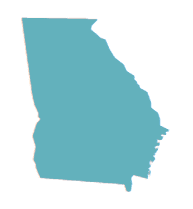Georgia – A Bright Spot in Early Childhood Education
Nov 6, 2019
What makes Georgia noteworthy:
Georgia provides high access for Black and Latino 4-year-olds (60%) while still meeting a relatively high number of NIEER quality benchmarks (8 out of 10).

Context:
Georgia’s state-funded pre-K program began as a pilot program in 1992, serving 750 4-year-olds in school-based, center-based, and home-based programs. Today, Georgia’s state-funded pre-K program provides universal access to 4-year-olds in various settings including public and private elementary and secondary schools, postsecondary vocational technical institutes, private and state colleges and universities, private child care centers, Department of Family and Children’s Services offices, Head Start sites, hospitals, military bases, YMCA/YWCAs, and faith-based organizations.
Highlights:
- Beginning in 1993, state lottery revenues funded the program, which increased program capacity to 8,700 4-year-olds.
- In 1995, with support for expansion from the private sector, the program expanded to serve all eligible 4-year-olds, becoming the first state-funded universal preschool program for 4-year-olds in the United States.
- Georgia’s SEEDS for Success State Leadership Team, which is comprised of state-level partners including the Georgia Department of Education, Department of Behavioral Health and Developmental Disabilities, Department of Public Health, Get Georgia Reading, and Higher Education, provides free teacher training and technical assistance through the Department of Early Care and Learning (DECAL) in an evidence-based model for social, emotional, and behavioral supports for young children (the Pyramid Model). This model includes classroom-embedded coaching, family supports, and universal and targeted approaches. DECAL provides intensive professional development from an inclusion specialist, including coaching and training, for teachers facing particular difficulty with classroom management and responding to challenging behaviors.
Recommendations/Additional Considerations:
- While Georgia provides high access for Black and Latino 4-year-olds, its state-funded preschool program does not serve 3-year-olds. State leaders should focus on expanding access to 3-year-olds while also focusing attention on two important NIEER benchmarks that Georgia did not meet during the 2017-2018 school year: a maximum class size of 20 or fewer students (Georgia’s is currently 22 students), and a staff ratio of 1:10 (Georgia’s is currently 1:11).
